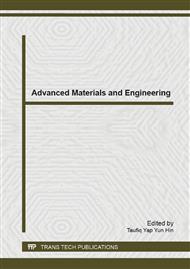p.396
p.400
p.404
p.408
p.412
p.420
p.424
p.428
p.436
Mixed Interface Stress Element-Finite Element Model with its Application
Abstract:
Based on the model of rigid-spring element suitable for homogeneous elastic problem, which was developed by Japanese professor Kawai, the interface stress element model (ISEM) for solving the problem of discontinuous media mechanics has been established. Compared with the traditional finite element method (FEM), the ISEM is more accurate and applicable. But on the other hand, the total number of freedom degree of ISEM in dealing with three-dimensional problems is higher than that of FEM, which often brings about the negative effects on efficiency of calculation. Therefore, it is necessary to establish a mixed model by gathering the advantages of ISEM and FEM together. By making use of the good compatibility of ISEM and introducing the concept of transitional interface element, this paper combines the counting methods of ISEM and FEM, and proposes a mixed model of ISEM-FEM, which can solve, to a large extent, the contradictions between accuracy and efficiency of calculation. The examples prove the applicability and adaptability of this model to engineering.
Info:
Periodical:
Pages:
412-419
Citation:
Online since:
June 2014
Authors:
Price:
Сopyright:
© 2014 Trans Tech Publications Ltd. All Rights Reserved
Share:
Citation:


